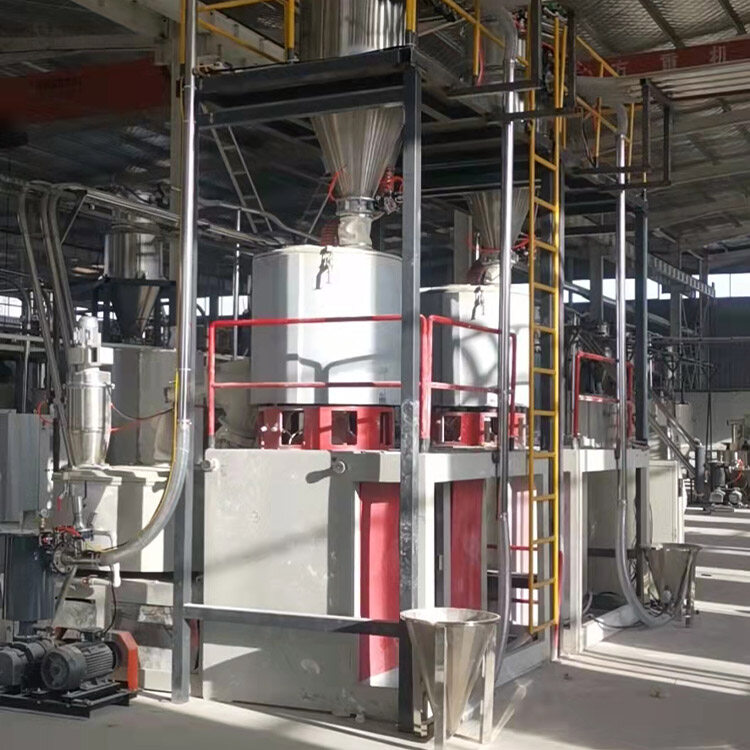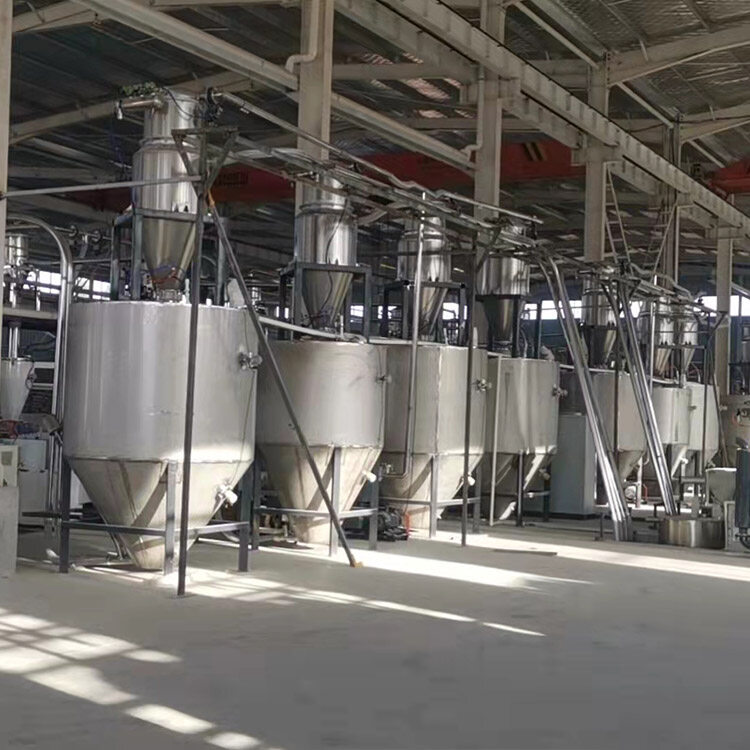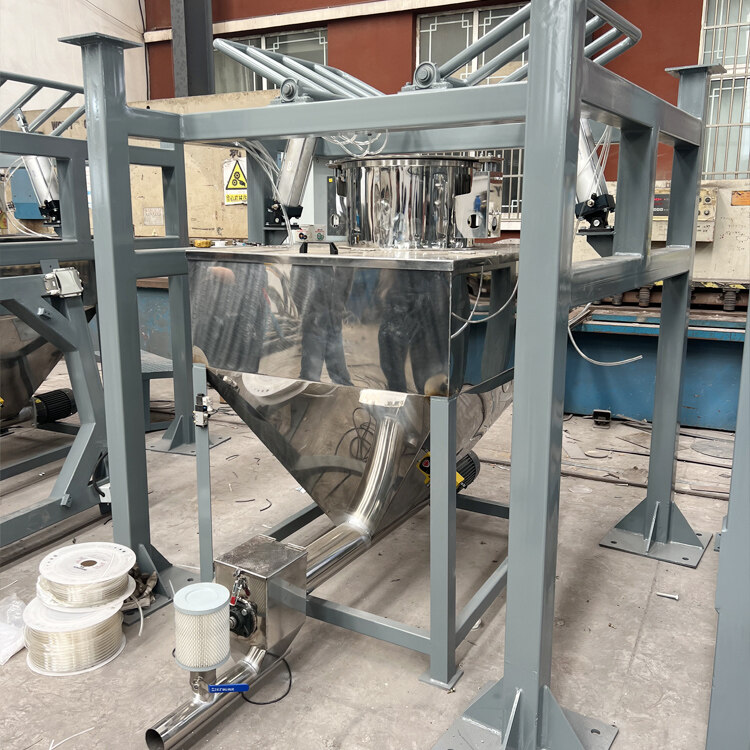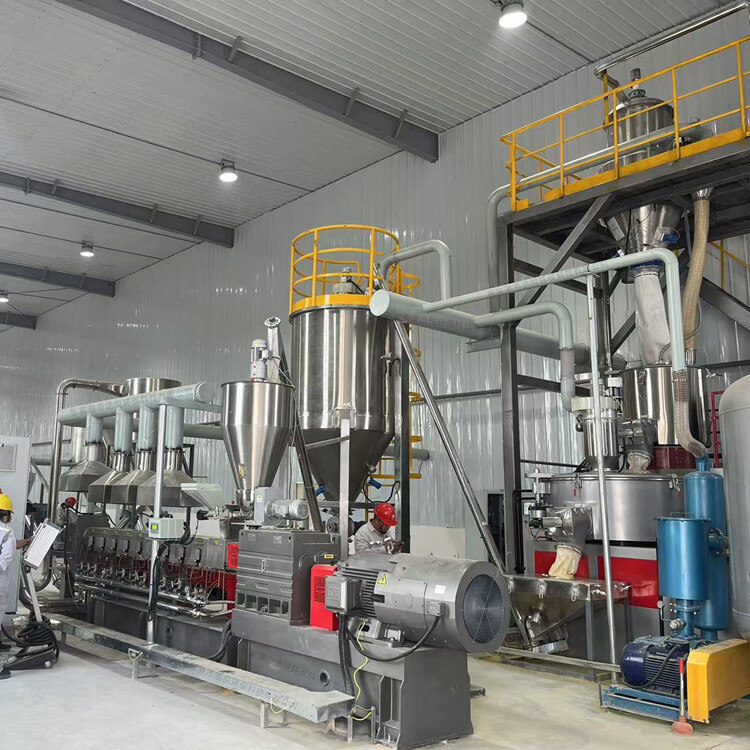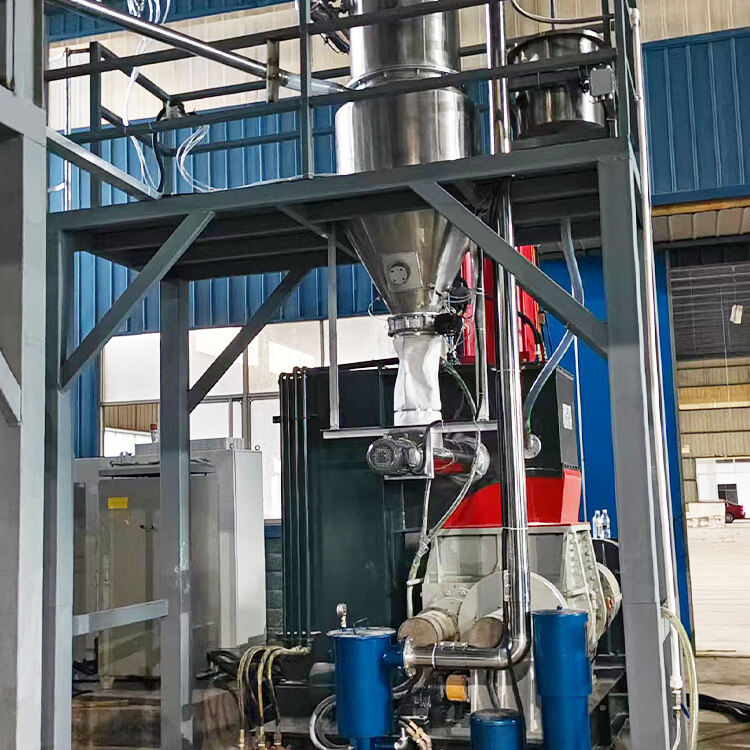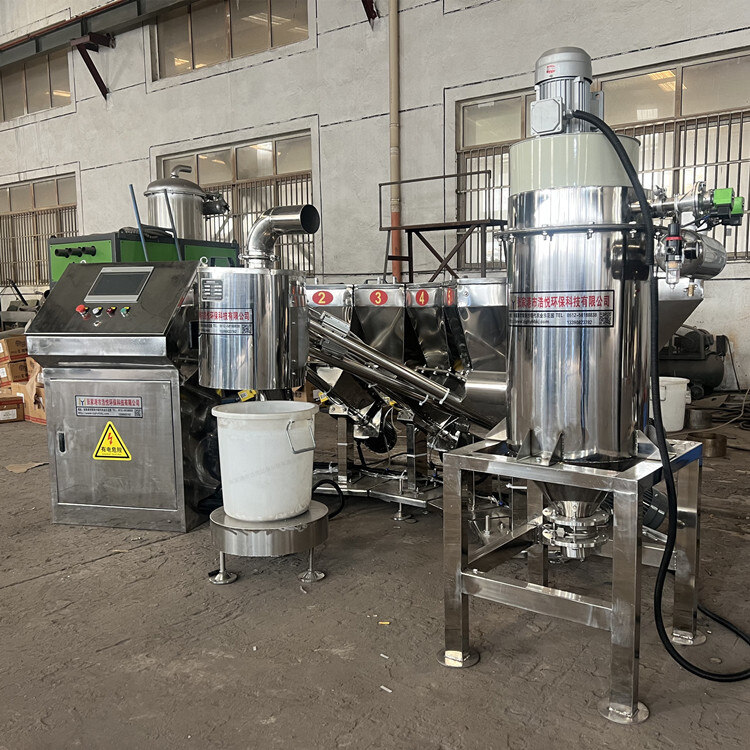- Introduction to automatic batching machine and fully automatic batching machine equipment
- The powder metering system tells you about the introduction of the mixing and drying machine
- 1000kg vacuum feeding machine
- Fully automatic small material batching system
- Research on Innovation of Automatic Weighing Machine Technology
- Design and operation of automatic batching system using PLC, industrial computer and frequency converter
Vacuum feeder
- Category:Spiral Feeder
- Hits:216次
- Release Date:2025-06-23
- Share:
- Inquiry
- Details
Vacuum feeder is a specialized equipment based on the principle of vacuum negative pressure, which realizes the automatic transportation of powdery, granular and other materials. It is widely used in industries such as food, medicine, chemical, plastics, etc. It effectively solves the problems of dust pollution, material loss, and cross contamination in traditional conveying methods by creating a vacuum environment in a closed system, using pressure difference to suck materials from the feed inlet and transport them to designated locations. The following provides a detailed introduction to the working principle, core structure, technical advantages, application scenarios, and development trends.
1、 Working principle and core functions
The operation of the vacuum feeder is based on the Bernoulli principle, with the core being the extraction of air through a vacuum pump in a closed pipeline, creating a negative pressure environment (typically ranging from -20kPa to -60kPa). Under the influence of external atmospheric pressure, materials enter the pipeline from the suction port and are transported along the pipeline to the discharge port by the airflow. When unloading, the negative pressure is cut off by a vacuum breaking device (such as an air valve), and the material falls into the receiving container by gravity. Its core functions are as follows:
Efficient automated conveying: It can achieve continuous or batch conveying, with a horizontal conveying distance of 30-50 meters and a vertical conveying height of over 10 meters. The maximum conveying speed is 15m/s, meeting the needs of different production line layouts and significantly improving material transfer efficiency.
Clean and environmentally friendly operation: The fully enclosed pipeline design completely isolates materials from contact with the outside world, combined with a pulse type bag dust removal system, with a dust removal efficiency of up to 99.9%. The workshop dust concentration is controlled below 1mg/m ³, which meets the requirements of occupational health and environmental regulations, especially suitable for industries with strict cleanliness requirements.
Flexible material adaptability: Suitable for various forms of materials such as flour, carbon black, plastic particles, pharmaceutical intermediates, etc. By adjusting the vacuum degree, pipeline diameter, and conveying speed, it can adapt to materials with different flowability and density, avoiding blockage or residue.
Intelligent and safe operation: Integrated overload protection, blockage alarm, low vacuum warning and other functions, PLC control system monitors the operation status in real time; For flammable and explosive materials, explosion-proof vacuum pumps and anti-static pipelines can be configured to ensure production safety.
2、 System composition and key structure
Vacuum generating unit
Vacuum pump: Select rotary vane vacuum pump (suitable for low flow, medium low vacuum scenarios), Roots vacuum pump (high flow, high vacuum, vacuum degree can reach -90kPa or above) or multi-stage vacuum unit according to the demand to provide stable negative pressure power.
Vacuum controller: Real time monitoring of the vacuum level inside the pipeline, automatic adjustment of the start and stop of the vacuum pump, ensuring stable negative pressure and reducing energy consumption.
Transportation pipeline system
Pipeline material: 304/316L stainless steel material is used in the food and pharmaceutical industries, with polished inner walls (roughness Ra ≤ 0.8 μ m), in compliance with GMP and FDA standards; The chemical industry often uses carbon steel or rubber lined pipelines to enhance corrosion resistance.
Pipeline design: supports combination layouts such as horizontal, vertical, and inclined, and uses large curvature radius elbows at turning points to reduce material friction loss; Some systems are equipped with air knife devices to prevent the adhesion and blockage of viscous materials.
Feeding and unloading unit
Feeding device: The suction nozzle is designed with a horn mouth structure, which is combined with a Venturi tube to accelerate the airflow and enhance the material suction capacity; For materials with poor fluidity, a vibrator can be installed to assist in feeding.
Unloading device: composed of a cyclone separator, filter, and unloading valve. The cyclone separator utilizes centrifugal force to achieve preliminary gas-solid separation, while polyester fiber filter bags or metal sintered filter cartridges further intercept fine particles; Rotary valves, flip valves, and other discharge valves control the discharge of materials to prevent air backflow.
control system
PLC+touch screen: Operators can set parameters such as conveying time, vacuum threshold, unloading cycle, etc; Real time display of device status, fault codes, and generation of operational data reports, supporting historical record tracing.
Intelligent linkage function: It is linked with upstream storage silos, downstream measuring equipment, or production hosts (such as injection molding machines and mixers), and automatically starts and stops conveying through level sensor signals, achieving unmanned operation.
3、 Technological advantages and industry value
Health and safety guarantee: Fully enclosed transportation to prevent dust overflow and material leakage, avoiding cross contamination; The equipment in the food and pharmaceutical industry supports CIP (In Situ Cleaning) function, and the inner wall of the pipeline is designed with no dead corners to ensure thorough cleaning and compliance with strict hygiene standards.
Low maintenance cost: No direct contact between mechanical transmission components (such as belts and chains) and materials, reducing wear and failure frequency; The filter adopts a quick detachable design, which is easy to clean and replace; The modular structure facilitates equipment maintenance and upgrading.
Energy saving and efficient operation: Compared with positive pressure pneumatic conveying, the energy consumption of vacuum feeding machine is reduced by 15% -30%; Variable frequency control technology can adjust the power of the vacuum pump according to the actual conveying volume, further optimizing energy consumption.
Flexible production adaptation: By using a distribution valve to achieve "one machine, multiple lines" or "multiple lines, one machine" configuration, materials are transported from multiple feeding points to a single or multiple unloading points, meeting complex production process requirements and reducing equipment procurement costs.
4、 Typical application scenarios
Food industry: In the processing of baking ingredients, achieve dust-free transportation of flour, sugar powder, and milk powder to avoid dust affecting the workshop environment; In the candy and chocolate production line, the raw materials are precisely transported to the mixer and molding machine to ensure food safety and consistent taste.
Pharmaceutical industry: used for the transportation of pharmaceutical raw materials, intermediates, and finished particles, fully enclosed and clean design to prevent contamination, used in conjunction with A-level clean areas to meet the requirements of sterile drug production; Seamless integration with tablet press and capsule filling machine in solid dosage form production.
Chemical industry: transporting powdered chemical raw materials such as carbon black, pigments, catalysts, etc. Explosion proof design suitable for flammable and explosive scenarios; In plastic modification production, achieving precise ratio transportation of plastic particles and additives improves product quality stability.
Electronics industry: The transportation of precision materials such as lithium battery positive and negative electrode materials, semiconductor silicon powder, etc., with anti-static design to avoid material electrostatic adsorption and spark generation, ensuring production safety; Cooperate with automated production lines to achieve precise material feeding.
5、 Technological development trends
Intelligent upgrade: Introduce AI algorithms to optimize vacuum control and conveying strategies, and achieve remote monitoring, fault warning, and data analysis of equipment through the Internet of Things; Real time monitoring of material flow and pipeline pressure using sensors, and automatic adjustment of operating parameters.
Green energy-saving innovation: Developing efficient and energy-saving vacuum pumps (such as magnetic levitation vacuum pumps) to reduce energy consumption; Using recyclable materials to manufacture pipelines and filters, reducing environmental pollution; Optimize system design to reduce operating noise to below 70dB.
Modularization and Customization: Launching standardized module components that support rapid assembly and functional expansion; Provide customized solutions for special industry needs (such as ultra clean and ultra-high pressure transportation) to enhance equipment versatility and adaptability.
The vacuum feeder, with its high efficiency, cleanliness, and intelligence, has become the core equipment for modern industrial material conveying. With the continuous innovation of technology, it will play a more important role in promoting automation and green production processes in various industries.


